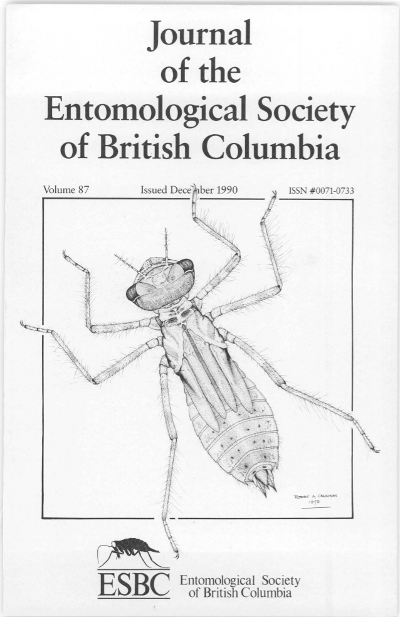Recommendations for sampling and extracting the eggs of the western hemlock looper, <i>Lambdina fiscellaria lugubrosa</i>, (Lepidoptera: Geometridae)
Abstract
No significant differences were found in the numbers of both new and old western hemlock looper eggs per 100 grams of lichen between three crown levels. Representative samples may be collected from lower crown levels with pole pruners, rather than from upper crown levels, which usually involves tree felling. Hot water is more efficient than 2% chlorine bleach for extracting the eggs from the lichen on which they are laid. However, the bleach method is non-destructive and allows the eggs to be reared in order to assess parasitism and fertility. These characteristics can also be identified through egg color using the hot water method , but the parasitoid species cannot be identified. It is recommended that the hot water method be used for forecasting population trends and the bleach method for specific information about parasitoids.Downloads
Issue
Section
License
Authors who publish with the Journal of the Entomological Society of British Columbia agree to the following terms:
-Authors retain copyright and grant the journal right of first publication with the work simultaneously licensed under a Creative Commons Attribution License that allows others to share the work with an acknowledgement of the work's authorship and initial publication in this journal.
-Authors are able to enter into separate, additional contractual arrangements for the non-exclusive distribution of the journal's published version of the work (e.g., post it to an institutional repository or publish it in a book), with an acknowledgement of its initial publication in this journal.
-Authors are permitted and encouraged to post their work online (e.g., in institutional repositories or on their website) prior to and during the submission process, as it can lead to productive exchanges, as well as earlier and greater citation of published work (See The Effect of Open Access).


